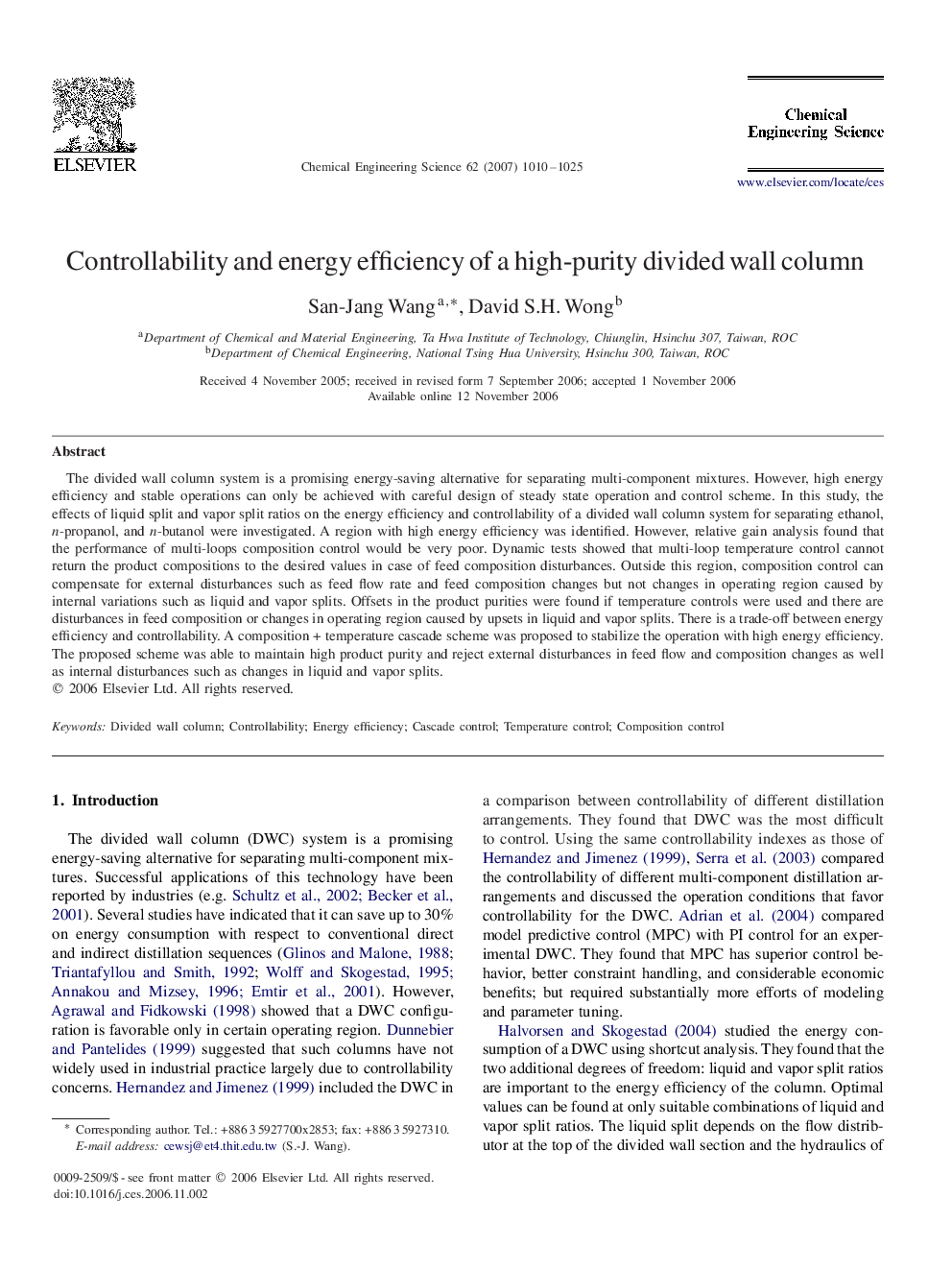| Article ID | Journal | Published Year | Pages | File Type |
|---|---|---|---|---|
| 158494 | Chemical Engineering Science | 2007 | 16 Pages |
The divided wall column system is a promising energy-saving alternative for separating multi-component mixtures. However, high energy efficiency and stable operations can only be achieved with careful design of steady state operation and control scheme. In this study, the effects of liquid split and vapor split ratios on the energy efficiency and controllability of a divided wall column system for separating ethanol, n-propanol, and n-butanol were investigated. A region with high energy efficiency was identified. However, relative gain analysis found that the performance of multi-loops composition control would be very poor. Dynamic tests showed that multi-loop temperature control cannot return the product compositions to the desired values in case of feed composition disturbances. Outside this region, composition control can compensate for external disturbances such as feed flow rate and feed composition changes but not changes in operating region caused by internal variations such as liquid and vapor splits. Offsets in the product purities were found if temperature controls were used and there are disturbances in feed composition or changes in operating region caused by upsets in liquid and vapor splits. There is a trade-off between energy efficiency and controllability. A composition + temperature cascade scheme was proposed to stabilize the operation with high energy efficiency. The proposed scheme was able to maintain high product purity and reject external disturbances in feed flow and composition changes as well as internal disturbances such as changes in liquid and vapor splits.
